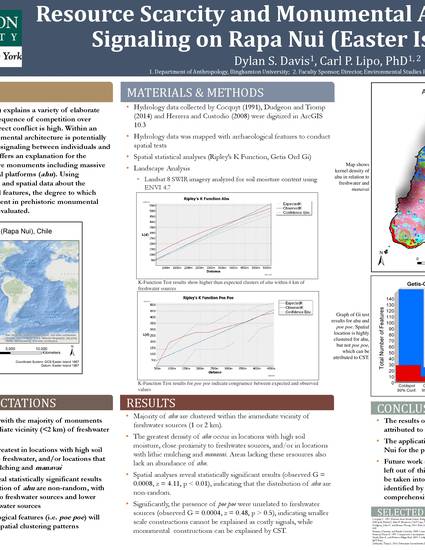
Article
Resource Scarcity and Monumental Architecture: Cost Signaling on Rapa Nui (Easter Island), Chile
Research Days Posters 2016-2019
Publication Date
4-21-2017
Document Type
Poster
Keywords
- Easter Island,
- Costly Signaling Theory (CST),
- environmental studies
Description
Costly signaling theory (CST) explains a variety of elaborate behavioral displays as a consequence of competition over resources when the risk of direct conflict is high. Within an archaeological context, monumental architecture is potentially explained as a facet of costly signaling between individuals and groups. On Rapa Nui, CST offers an explanation for the construction of labor-intensive monuments including massive statues (moai) and ceremonial platforms (ahu). Using hypotheses derived from CST and spatial data about the distribution of archaeological features, the degree to which CST accounts for the investment in prehistoric monumental architecture on Rapu Nui is evaluated.
Disciplines
Citation Information
Dylan Davis and Carl P. Lipo. "Resource Scarcity and Monumental Architecture: Cost Signaling on Rapa Nui (Easter Island), Chile" (2017) Available at: http://works.bepress.com/carl-lipo/10/
